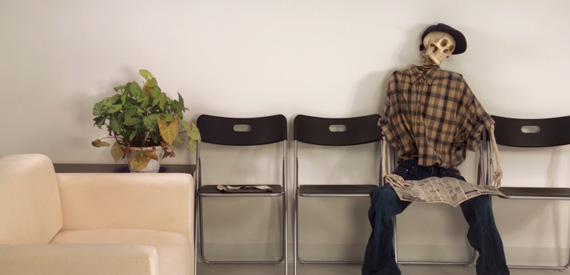Six ways to improve your waiting rooms
Delivering a better patient experience builds trust and advocacy
Waiting for a medical appointment is one of those things that is utterly annoying (especially when you have been waiting for a while) and nerve-racking. As a patient, many thoughts go through your head. Is there something really wrong? Will everything be okay? What will the doctor say? It is important to take these thoughts and concerns into account and create a better experience in the waiting room in order to calm the hospital consumer’s fears.

Research has proven that a well-designed waiting room can change how patients feel about the care that they are receiving and streamline the care process. Here are six ways that you can improve the waiting areas at your hospital:
Comfortable Seating: It is already bad enough to be sick and then on top of that be crammed in a tiny chair and uncomfortable. A modular seating system called MODU can be adapted for different offices and patients. MODU incorporates movable armrests and seating pads that let individuals determine what is comfortable for them and “customize” the experience.
Manageable Queues: Using the “take a number” system makes people feel like they can’t leave the area and it isn’t very personal. Featuring wait-time displays in multiple places is a better idea than having the queue planted in one place. There is also an iPhone app called “Inline” that reveals queue wait-times, so that patients can monitor their place in the queue from a distance. This application also lets patients book appointments, locate the room of their appointment, track medication and has many other health management features.
Clear Medical Records: Many medical records are now digital, but there is also a low-tech way to ensure that your patients are managing their own health. FOLIO allows patients to store their medication lists and appointment dates in paper wallets that can easily be taken with them to the doctor’s office. Once the patient is at the office, they use the information from FOLIO to fill out a form called “Prepare,” which asks simple questions in a clear way in order to save time and avoid mistakes. Once the appointment is over, there is a form called “Remember” which the doctors fill out that lists prescriptions and other health advice.
Healthy Food: It is pretty ironic to go to a hospital or doctor’s office and all there is to eat from a vending machine is a bag of chips, M&Ms and Pepsi or Sprite. Hospitals are supposed to encourage patients to be healthy, not snack on junk food! Instead, have a vending machine that dispenses water, apples and other nutritious snacks as your patients wait. It can be designed like a kitchen counter to emphasize the fact that healthy eating begins at home.
Welcoming Signage: Make the office seem warmer and personal with welcome boards that show pictures of the doctors on duty and post information about healthy activities and classes at the hospital.
Communal Space: Communal tables can help reduce patients’ anxiety in the consultation rooms, especially if there is a large family. It could also create a more comfortable environment during medical consultations (with some privacy). Instead of having your patient sit on an examination table with a gown on and feeling awkward, perhaps your patient could meet you at a big table with his/her clothes on. This will make patients feel more at ease.
Taking these six suggestions into account for your waiting room will create a better experience for those you care most about; your patients.
